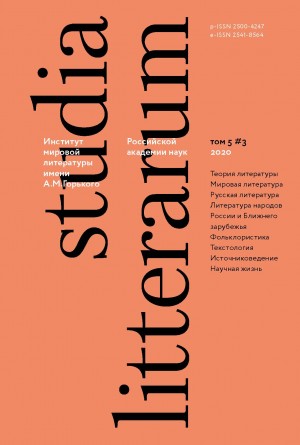Poetics of Octavio Paz’s The Violent Season
Journal title: Studia Litterarum
Authors: A.V. Gladoshchuk
Subject(s): Literature, Languages and Literature

Journal title: Studia Litterarum
Authors: A.V. Gladoshchuk
Subject(s): Literature, Languages and Literature
Journal title: Studia Litterarum
Authors: Yuri Y. Barabash
Subject(s): Literature, Languages and Literature
Journal title: Studia Litterarum
Authors: Marsel R. Khamitov
Subject(s): Literature, Languages and Literature
Journal title: Studia Litterarum
Authors: Olga A. Simonova
Subject(s): Literature, Languages and Literature
Journal title: Studia Litterarum
Authors: Claudia Pieralli
Subject(s): Literature, Languages and Literature
Journal title: Studia Litterarum
Authors: Akifumi Takeda
Subject(s): Literature, Languages and Literature
Journal title: Studia Litterarum
Authors: Olga Peshkova
Subject(s): Literature, Languages and Literature
Journal title: Studia Litterarum
Authors: T. Viсtoroff
Subject(s): Literature, Languages and Literature
Journal title: Studia Litterarum
Authors: Кazbek К. Sultanov
Subject(s): Literature, Languages and Literature
Journal title: Studia Litterarum
Authors: Alexander A. Panchenko
Subject(s): Literature, Languages and Literature
Journal title: Studia Litterarum
Authors: Natalya I. Shubnikova-Guseva
Subject(s): Literature, Languages and Literature
Journal title: Studia Litterarum
Authors: Evgeny B. Belodubrovsky
Subject(s): Literature, Languages and Literature
Journal title: Studia Litterarum
Authors: А.V. Svyatoslavsky
Subject(s): Literature, Languages and Literature
Journal title: Studia Litterarum
Authors: A.S. Balakhovskaya, N.V. Zakharova
Subject(s): Literature, Languages and Literature